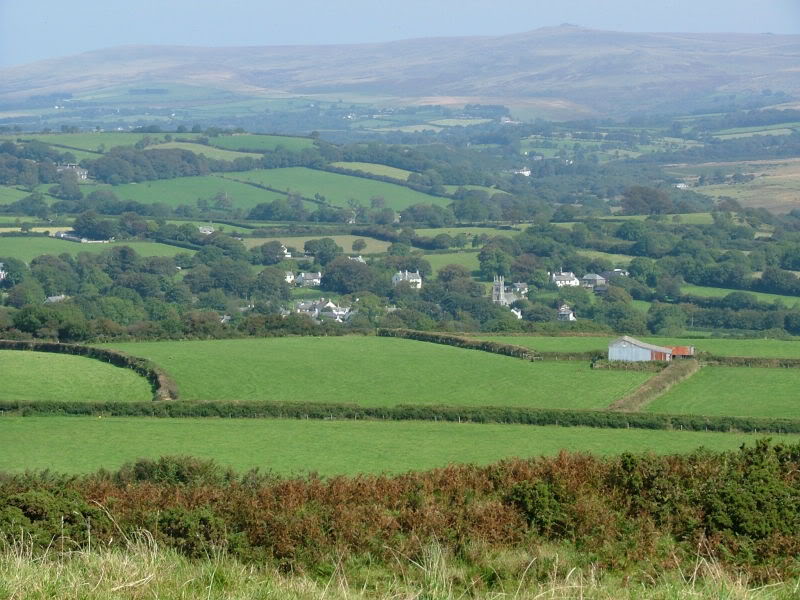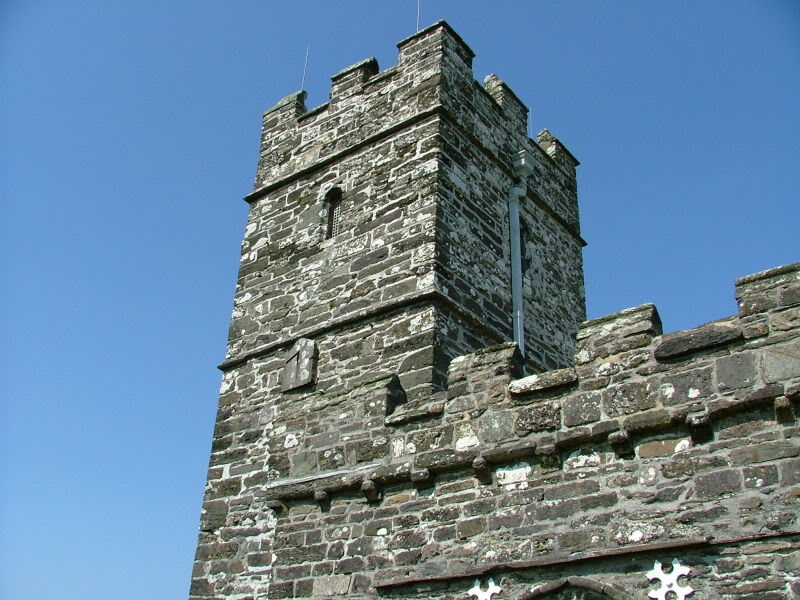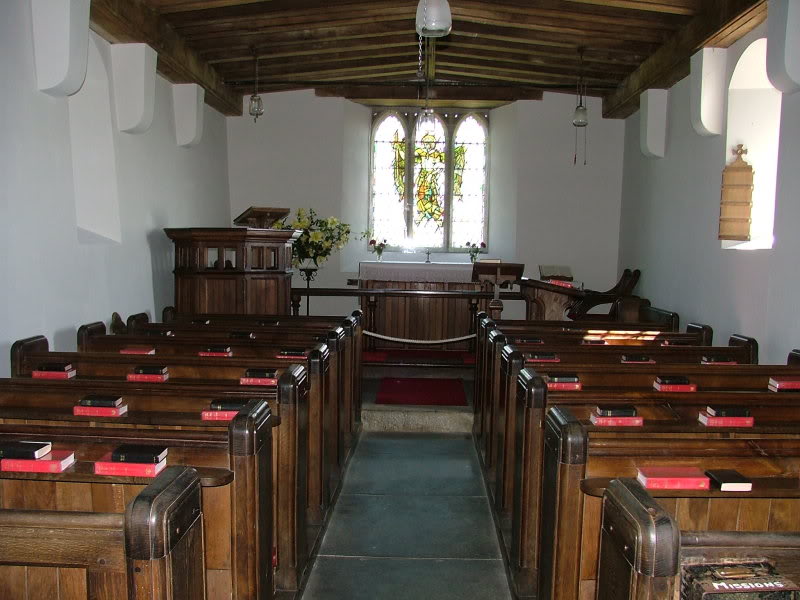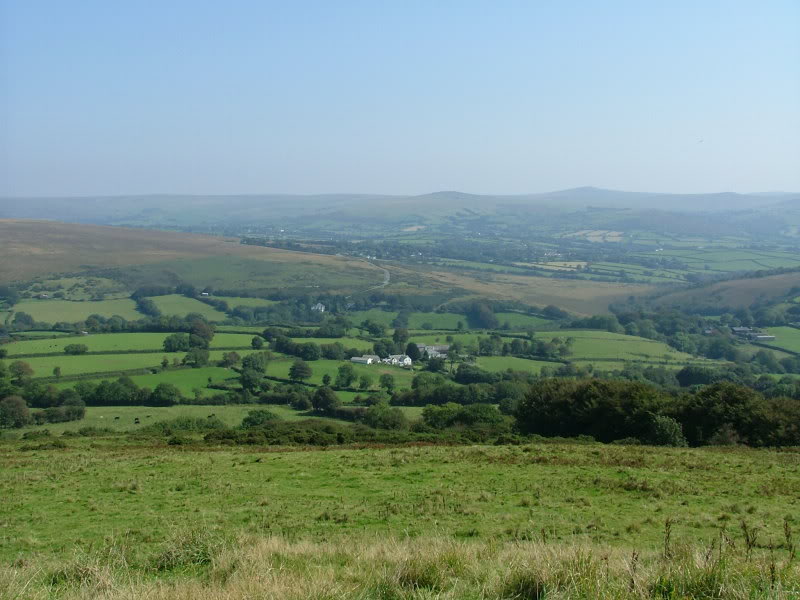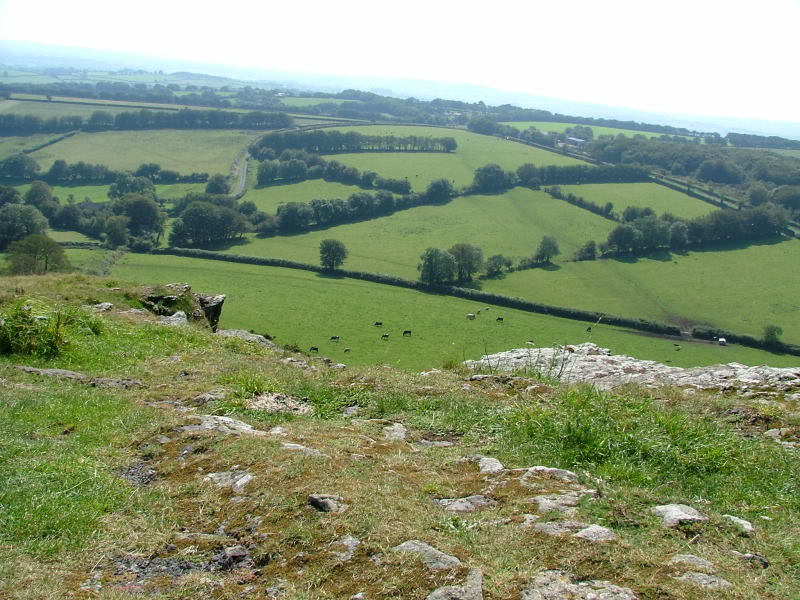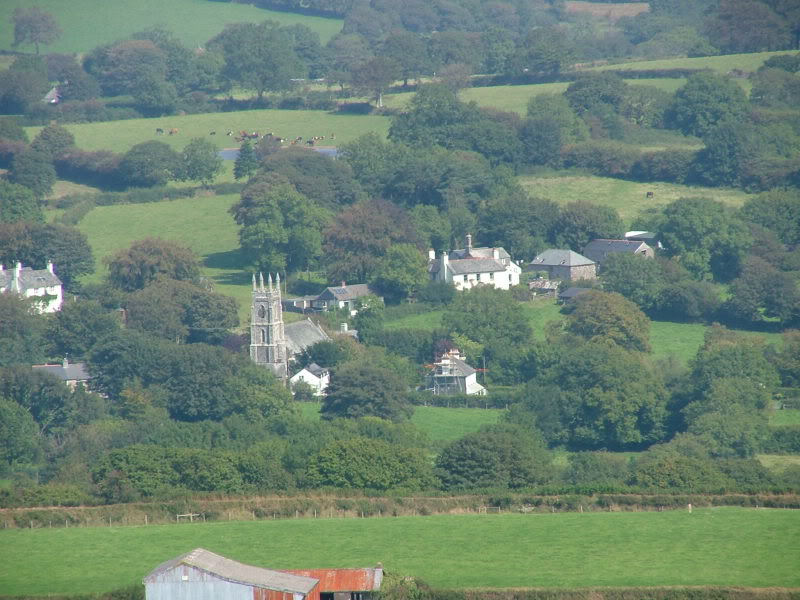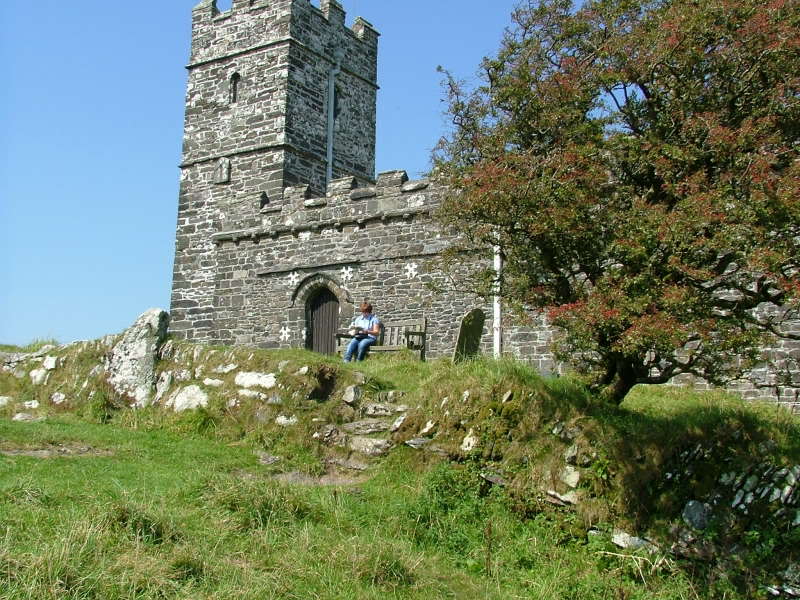Post by Dave on Sept 13, 2010 16:44:44 GMT
Brentor St Michael’s church Dartmoor
If you have never been to St Michaels Church at Brentor then can I can recommend that when you have time go along and spend the day there.
I was a very young driver when I first came across Brentor. Lost in a thick fog around Tavistock and for some strange reason I was believing the hand of Dartmoor was soon to grab the steering wheel of my car. Then through the fog I saw Brentor and it looked so eerie sitting high up on the hill just visible as the fog and mist swirled around it.
So it was no surprise that when I made my must do with Carol list many years later,it was going to be on it and I took Carol there about six years ago, there is the customary Carol picture and shows yet another look to her, this time the long hair lost after her first chemo treatment back then, just starting to grow again and it came back so thick and curly.
One good word of advice if you go there, when you park in the carpark at the bottom, make sue your car is locked and nothing left on display inside. Like so many parts of the moors, parked cars are a target for those not very nice people who like to take what good honest folk have worked for.
The history of the church is very interesting and I had added an article I found that those who love history will enjoy reading
There are various versions of how the tiny church became to be built clinging precariously to the volcanic outcrop. The first version relates how a wealthy merchant was caught at sea in a violent storm. With gigantic waves crashing over his boat he feared he would never venture on land again and instead be cast down into the very depths of the ocean. The boat was being flung around like a cork in a bathtub and in desperation he vowed to any god or deity that could save him that if he could be safely delivered ashore he would build a church upon the first tract of land he saw. His prayers were answered and upon stepping ashore he saw Brent tor. Being a man of his word he built that promised church on top of the tor.
Another similar version provides a few more characters to tell its tale. We still have the wealthy merchant caught in a mighty storm off the coast of Devon. However this time we also have the Devil. Apparently in a moment of boredom he decided to create a terrible storm and wreck a ship or two for sport. So that very night he conjured up a mighty tempest. The wind blew out the beacon fire on Brent tor thus hindering any nautical navigation. Much to the Devil's disappointment the ship carrying the wealthy merchant rode the storm but by daybreak was drifting perilously towards the rocks. Satan had decided to fly over the ship to watch its final downfall and see the helpless sailors drown in the massive swelling waves. In desperation the merchant prayed to his patron saint for rescue, in return he vowed to build a church on the first and highest land they saw and that church would be dedicated to his patron saint who happened to be St. Michael de la Rupe. A battle of wills then ensued between St. Michael and the Devil and luckily for the ship and its crew St. Michael won. The ship was delivered safely to port and lo and behold the first high land the merchant saw was Beacon tor otherwise known as Brent tor.
Again as this merchant was true to his word and work began on building a church on the tor. The Devil saw what was going on and every night he would go to the top of the tor and kick down any building work that had been thus far built. This went on for many days and eventually the merchant once again appealed to St. Michael for his help. The valiant saint once again came to the merchants aid. The next night when the Devil arrived at the top of the tor he found St. Michael waiting for him. The saint heaved a mighty boulder at the Devil and hit him on his heel. This sent the evil one howling and limping off into the darkness of the night. The next day work began again but this time it was not demolished during the night and slowly the small church was built on top of the tor. It is suggested that this church is the smallest church on Dartmoor due to the fact that the merchant had wasted most of his fortune during the struggle with the Devil and the church was built with what little money he had left. According to this version the church is known to the moorfolk as 'The Candle' in memory of the beacon that once stood there.
A third version tells how far back in the distant times there was a settlement at the bottom of the tor. The inhabitants were pagans and worshipped the Devil. Eventually they decided they would build a church and become Christians. The site for this new edifice was to be at the bottom of the tor. Obviously the Prince of Darkness was none too happy to be losing his followers and so he waited until the church was finished and then went into action. The following morning the villagers awoke to find an empty churchless void. Downhearted but not defeated they decided that the following day they would rebuild their little church. The breaking dawn saw them rising from their homes prepared to begin the work of rebuilding the church. As they approached the tor they noticed that the Devil had put the original church back but not at the bottom of the tor as they had planned but he had perched it precariously on the top. After much deliberation they decided to leave it there and that they would endure the steep climb to the top. A messenger was sent to Exeter to ask the Bishop to come and dedicate the church. A few days later he arrived and the church was dedicated to St. Michael. This particular saint was chosen because St. Michael held the hilltops in his care. After the service one very angry Evil One appeared and confronted the assembly threatening various dire acts of retribution. During his wrathful tirade a bright light descended from the sky and the Archangel St. Michael appeared and confronted the Devil. A mighty battle ensued and St. Michael slung the Devil off the tor onto the rocks below. Then picking up a heavy boulder he hurled it down on to the Devil. Mortally wounded the Devil disappeared never to be seen again. However the big boulder that St. Michael threw still sits below the tor
This version is dated to the 12th century. Another story attached to the church is that of the floating coffins. Because of the very shallow soil on top of the tor it was difficult to bury the dead in ground so they were kept in the crypt. Many years ago a violent storm hit Dartmoor and the rain was relentless. Once the storm had passed over it was noted that the crypt had become flooded and all the coffins were floating around like boats on a paddling lake.
Now for the serious stuff, the first mention of the church is in the Woburn muniments and according to Finberg, 1969, p.16, it was between 1155 and 1162 when Robert Giffard, the lord of Lamerton and Whitchurch built the church. This he gave along with some surrounding land to Tavistock Abbey as a perpetual gift. The actual charter reads: "My father, Robert Giffard, gave the rock of Brentor to God, St. Mary and the church of Tavistock as a perpetual gift, also thirty acres of his land at Lamerton, and the church of St. Michael which he built on that same rock at his own expense", Burton & Matthews, 1990, p. 7. This gift also resulted in the creation of a new manor which was known as Holeyeat. It is thought by some that Robert Giffard was the wealthy merchant who the legend pertains to?
The first recorded dedication of the church appears in 1155 and was to St. Michael although there was a slight confusion in 1740 when John the Baptist was recorded. It is thought that this mistake arose due to some confusion with parish feats day, Orme, 1996, p.137. It is probably no coincidence that many churches that are dedicated to St. Michael are found on high ground or had lofty steeples. Morris, 1998, p.56 draws attention to an interesting possibility and that is: In Gaul the cult of St. Michael came about by the complete substitution of him for the previously worshipped God, Mercury. Both were active in the heavens and each were said to protect souls. Mercury was thought of as a guardian of flocks and herds and this attribute would explain why so many church dedication to St. Michael are were found in upland, pastoral areas such as Brentor. Many of the sacred sites of Mercury were high places called Mercurii Montes and once St. Michael had replaced him the sites were known as St. Michael's Mounts. Does this begin to sound familiar in the context of Brentor? Morris also notes that in both Gaul and Britain Mercury was equated with a 'Celtic' god called Lugos or Lugus an association which carried on into the Roman period. Now this god is also reflex of the Irish god Lugh or Lug, could it be possible that the early pagan inhabitants of the settlement at Brentor worshipped the god Mercury or some associated 'Celtic' deity and then replaced him with St. Michael when Christianity came to the area?
The church was officially dedicated by Bishop Stapledon on the 4th of December 1319



